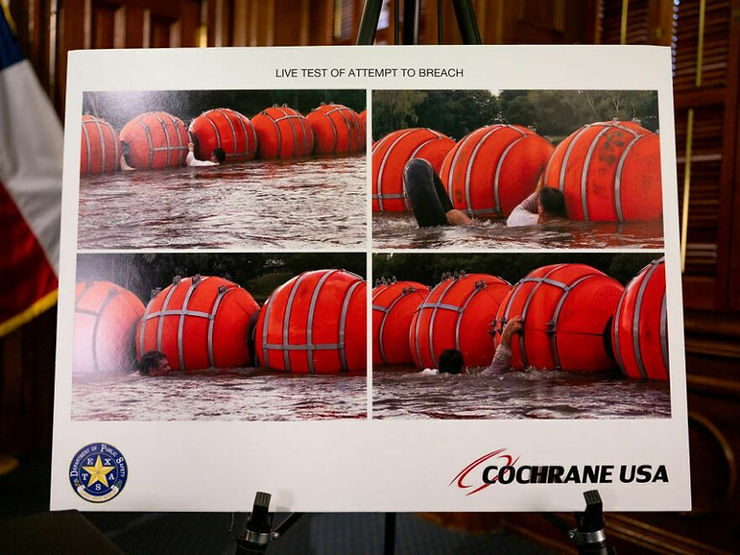By: Coco Xu
The state of Texas will place a floating barrier in the center of the Rio Grande on July 7 in an attempt to hinder Mexican immigrants seeking asylum, the most recent in a series of efforts to reduce illegal crossings.
The plan will cover 1,000 feet of the border with 4-feet-wide, 4-feet-high bright orange buoys. Though the barrier only covers a tiny portion of the 1,254-mile border, it is movable and can be “deployed strategically” in other sections where crossings are common, said Gov. Greg Abbott.
“We can put mile after mile after mile of these buoys,” Mr. Abbott said at a news conference. “When we’re dealing with gatherings of 100 or 1,000, one of the goals is to slow down and deter as many of them as possible.”
The first stretch of the barrier will be deployed near Eagle Pass, a location known for being a migration hotspot. It is projected to cost about $1 million.
The plan is the latest maneuver by Republicans to address mass border crossings, many of them occurring on the Texas-Mexican border.
On June 7, Gov. Ron DeSantis of Florida flew thirty-six migrants from El Paso, Texas to Sacramento, California to combat the immigrant-friendly policies of Californian Democrats that he claimed “incentivized” more migrants to enter the U.S.
In recent weeks, over twelve Republican governors, including Mr. DeSantis and the governors of Ohio, South Carolina, and Virginia, have sent police and National Guard members to the Mexican border at the request of Mr. Abbott.
The buoy barrier is one of many steps initiated by Texas in its program to deter Mexican immigrants, including the use of concertina wire spread along the Rio Grande’s banks. Last month, the Texas State Legislature approved a two-year budget that included $5.1 billion on border security.
Officials in Eagle Pass welcomed the efforts with open arms. “If this means less people will be crossing illegally through the heart of Eagle Pass, we support it,” said Mayor Rolando Salinas Jr. “We want to avoid any interruption to our international bridges and our downtown businesses.”
Roberto De Leon, the chief deputy sheriff in Maverick County, which encompasses Eagle Pass, said that so many migrants had fruitlessly tried to swim across the river that deputies have had to retrieve one or two dead bodies from the river every day.
“Anything that keeps us from finding a dead body on the side of the river, I’m for,” he said.
While the barrier is meant to prevent migrants from crossing the border, the buoy wall is not completely insurmountable; officials say that it is possible to swim through the buoys with “great effort.” Underwater webbing will eventually be added to make swimming underneath the buoys impossible. However, Mr. Abbott warns that the barrier is only one of the many obstructions to entry. “Some may eventually get to the border where they are going to face that multi-layered razor wire and a full force of national guard and DPS officers,” he said.
Texan immigration supporters view Mr. Abbott’s plans as “another political stunt at the expense of desperate people.”(The New York Times)
“He is using this as political theater, to promote his MAGA agenda, and it’s not going to stop people from coming,” said Rodolfo Rosales Jr., a state director with the Texas branch of the League of United Latin American Citizens.
Others say that most immigrants who use the Rio Grande as a route of entry do so only because there are very few alternatives. “Abbott’s latest stunt will make this situation even more dangerous and deadly,” said Mary Miller Flowers, director of policy and legislative affairs at the Young Center for Immigrant Children’s Rights.
When questioned if the barrier would create new dangers for immigrants, especially those with children, officials stated that it would prevent families from entering the river in the first place.
“This is a deterrent from even coming in the water,” said Steve McCraw, director of the Texas Department of Public Safety.
Sources Used:











